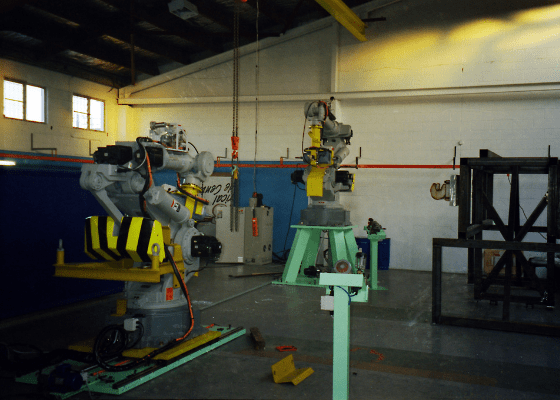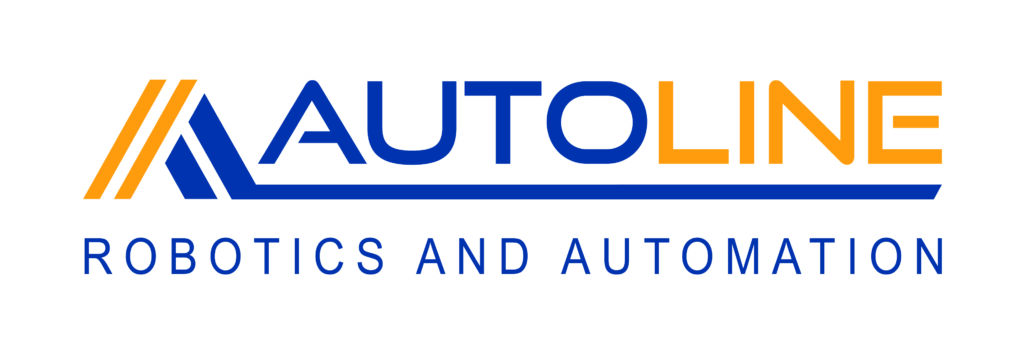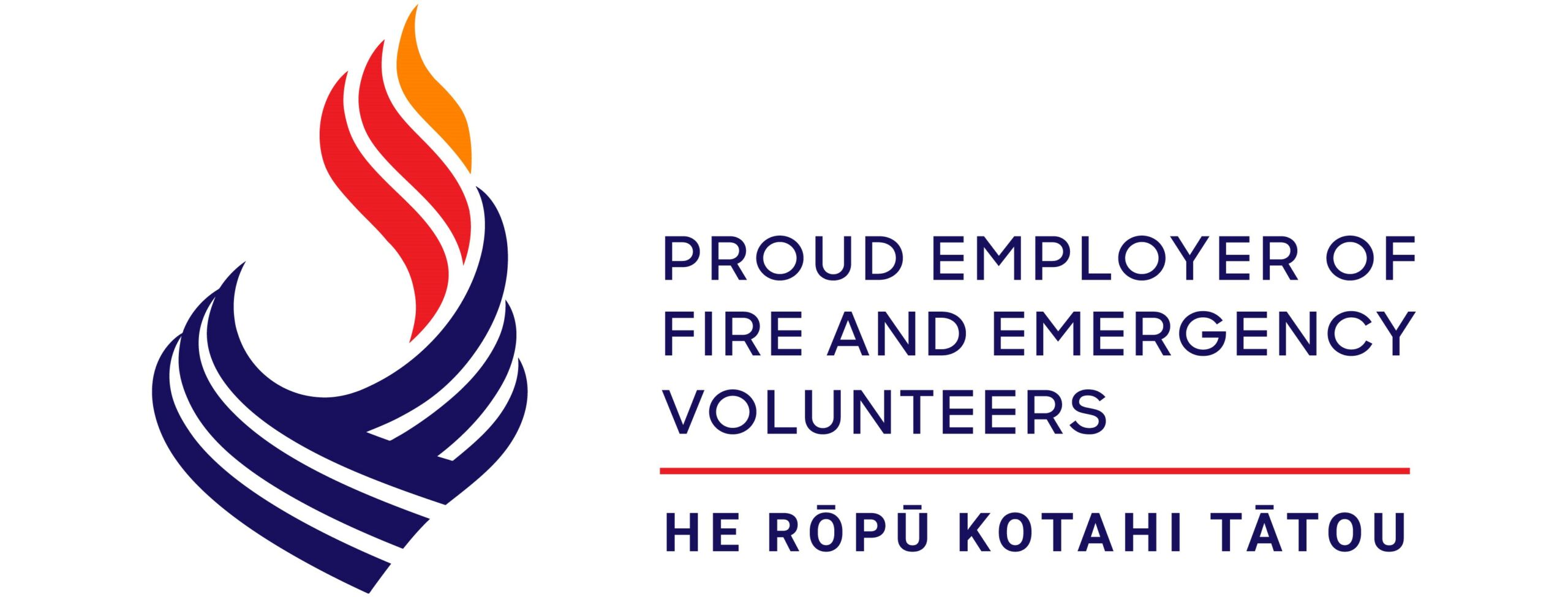History of Robotics: Then and Now
Over 10 years ago, Autoline expanded out into robotics with the acquisition of Carbines Engineering, New Zealand’s leading robotics integrator with over 35 years of experience in the industry. Today, we continue to lead as the Robotic, Automation, and Conveyor Experts. We bring the latest technology and innovations in New Zealand.
Check out the then and now robotic systems! Have a read about the first robotic welding systems as part of the history of robotics in New Zealand!
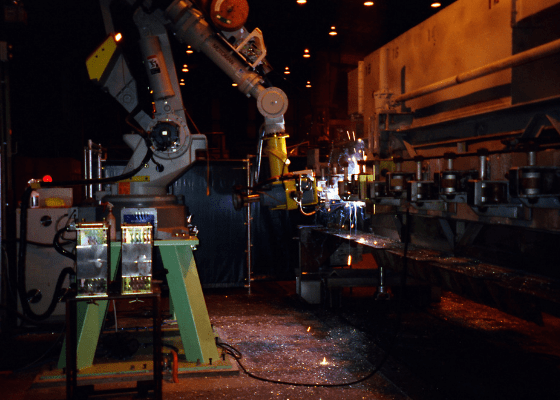

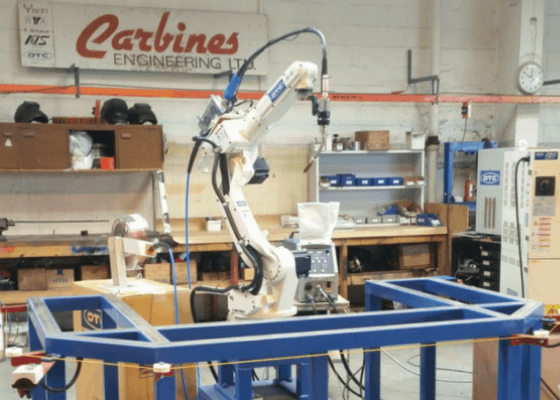

New Zealand’s First MIG Welding Robotic System
Company: Anderton Holdings Limited
Installed: Year 1984
Application: Welding Shopping Trolley Components
Model Robot: Motoman L-10WA
Motoman-L10WA History
The Worlds First 6 Axis Robot
Motoman-L10WA:
- Introduced in 1983
- Six axes
- Maximum workload 5kg
- Weight 280kg
Control System RG:
- Introduced in the 1980s
- Controls up to 6 axes
- Programming capacity 1000pos (600 instructions)
- 99 Robot jobs in magnetic memory (external memory on tapes)
- 22 Input signals and 21 output signals
- 127 Welding parameters
- Liner and circular interpolation possible
- Dimensions 1600x650x700mm
- Weight 350kg
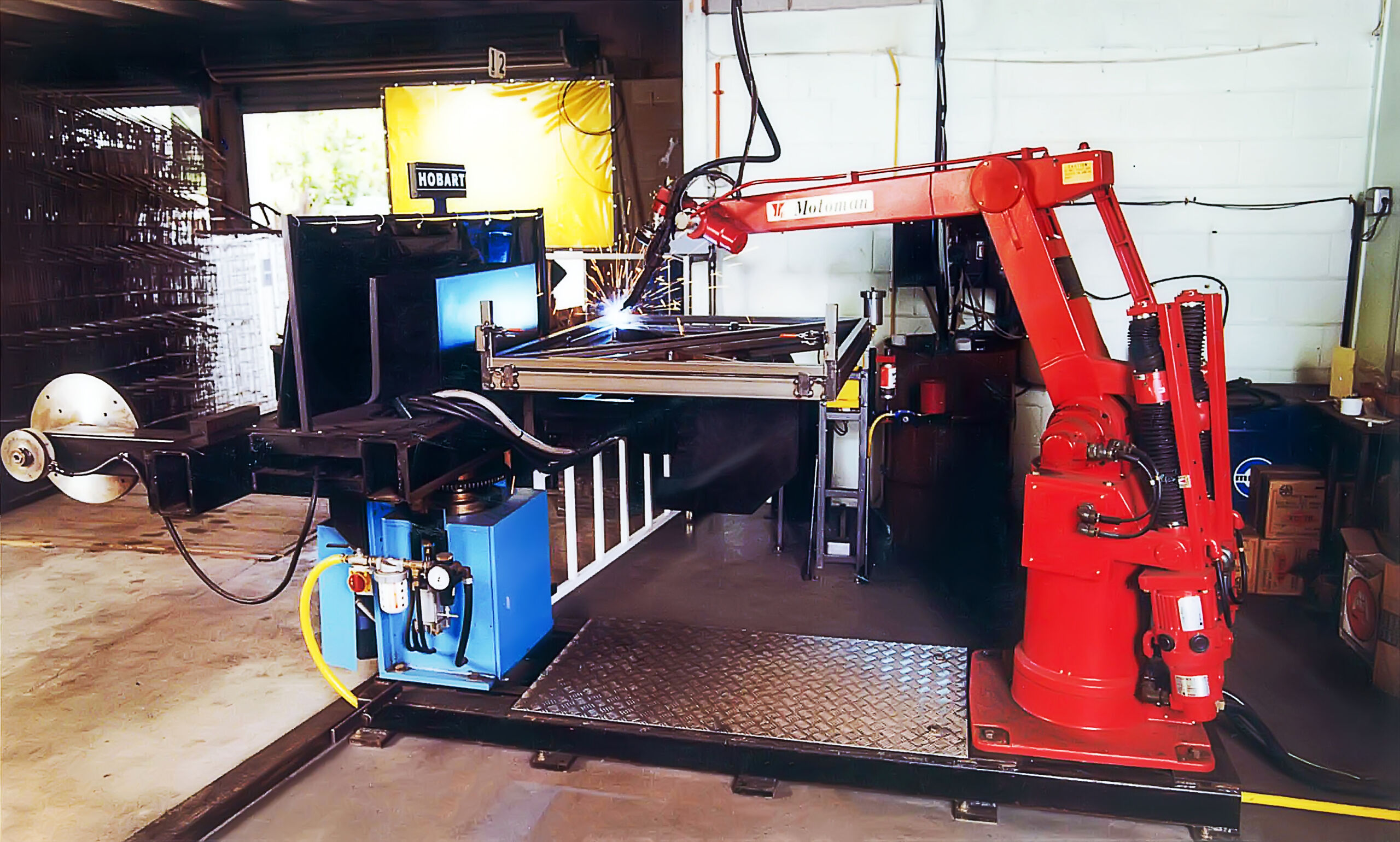

Improvements To Robot and Controller
The work area in the new Motoman L10W was increased by 80% and the robot wrist is more narrow. The robot was made of a light aluminium alloy which helped reduce the size of its motors.
The model L10WA was the world’s first six axes robot in the history of robotics. It had an extra wrist axis called A. The control system RG could handle either this robot model, or the ordinary L10W and an external axis. However, the L10W-models were almost exclusively used with the next generation controller RX.
The later versions of RG control system enabled circular and linear interpolation, three dimensional shifting of a robot job and pendular motion. It was even possible to control it from an external computer, but that was not put to much practical use.
New Zealand’s First OTC Daihen Welding Robotic System
Company: Franklin Machinery Ltd
Installed: February 1985
Application: Farm Gate Hardware
Equipment: OTC LK 6 axis robot with OTC transistor pulsed MAG TRM-350 welder, 4 Automatic Guard System’s
OTC Daihen-LK History:
- Introduced in 1985
- Six axes
- Capable of performing TIG/MIG welding operations without causing interference to their controllers.

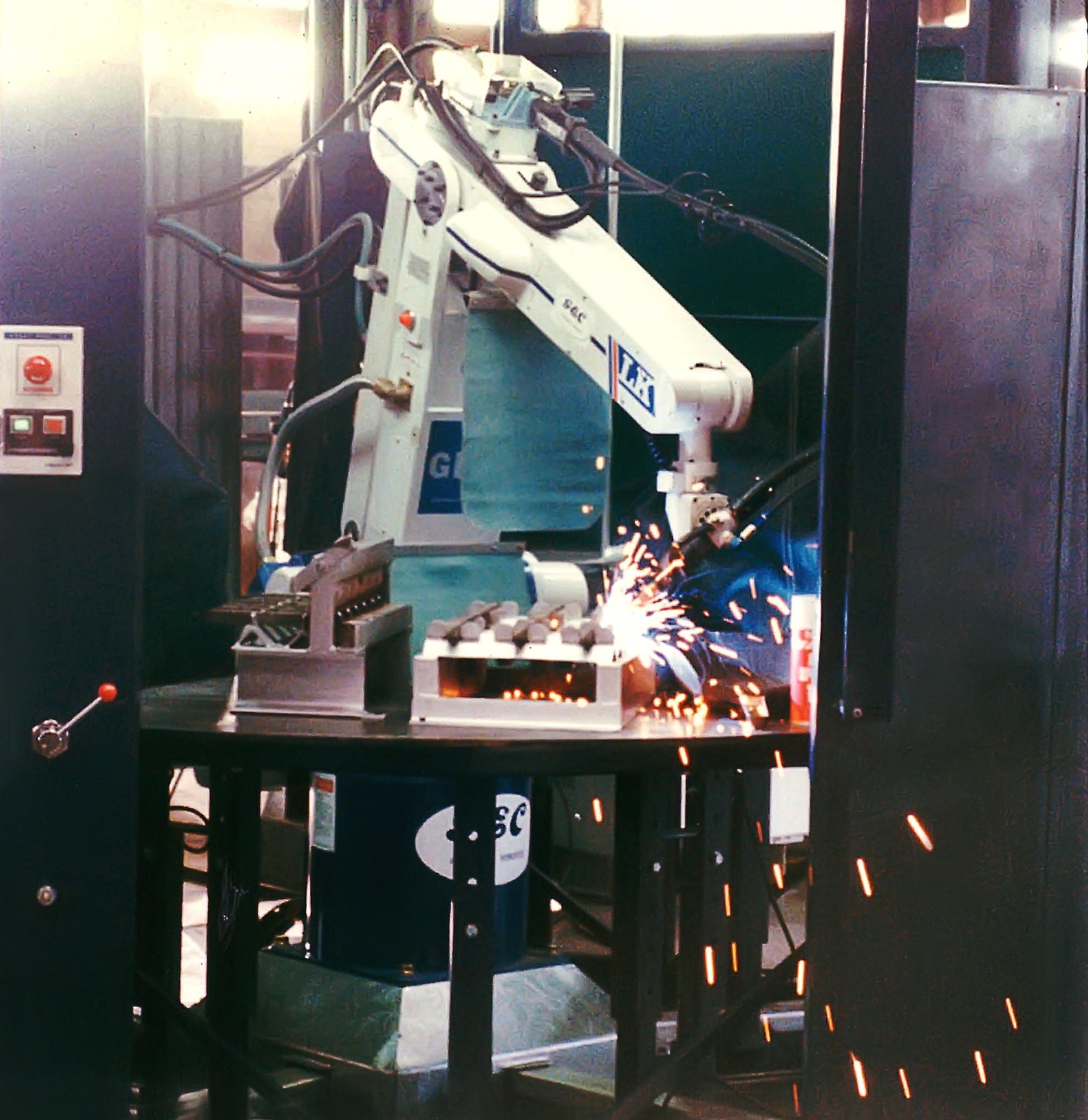
The OTC LK robot was a six-axis (five axes plus gyro axis) robot. The robot and controller was capable of performing TIG and MIG welding operations where the robot and controller were fully isolated from the harmful effects of the high-frequency impulses generated during MIG/TIG welding.
In addition to the LK there are the LA and SA robots, all three of which were available for MIG welding. All come with a magnetic bubble memory controller enabling large welding programs to be stored (99 programs!)
A feature of the OTC controllers was the use of a teach pendant which gave simple commands in language understandable by welding engineers. Optional welding equipment included 350A air-cooled or 500A water-cooled torches and a welding torch shock sensor. When the welding torch shock sensor was fitted, the robot would automatically shut down if any external forces were sensed. This protected the torch, tooling and work piece from any accidental damage.
OTC Daihen has a long and eventful history in New Zealand, introduced by Carbines Engineering 35 years ago, New Zealand’s first and original robotic company.
OTC Daihen was established in 1919 as a manufacturer of transformers. It began manufacturing welding equipment in 1934. Since then, the company has grown steadily to meet both Japanese and world markets. It’s product range covers arc welding machines, arc welding robots, plasma cutting and welding machines, carbon dioxide laser equipment and electron beam welding equipment.
Southward Engineering OTC Daihen Welding Robotics
Carbines Engineering installed a total of 3 x OTC LK welding robots in 1984 and 1985 at Southward Engineering for the welding of exhaust manifolds and tube assemblies for the car assembling industry that once succeeded in New Zealand.
With the closure of Mitsubishi Motors car assembly plant in Porirua in 1998, these robots lost their jobs along with the many employees that were once employed in the car industry. At its peak in 1981 the Porirua plant, then called Todd Motors, turned out approximately 22,500 cars a year.
In 1986 more than 6000 people were directly employed across 13 car manufacturing plants throughout NZ. There were an estimated additional 5000 employees employed in the car parts related industry that had to diversify their businesses to survive.
Autoline was one of these companies that had previously supplied automation solutions to the car parts industry with robotics, press and vibratory bowl feeders, and pneumatics. We adapted to this change by refining our product offering and customer base. In 12 short years, a complete industry that was once the backbone of engineering in New Zealand was gone.
Autoline is focused on helping Kiwi’s keep manufacturing local. We are one of New Zealand’s largest family-owned robotic integrator company, trusted by industry for the last 35 years, with more than 200 robots installed globally.
Southward Engineering continues today as New Zealand Tube Mills Ltd.

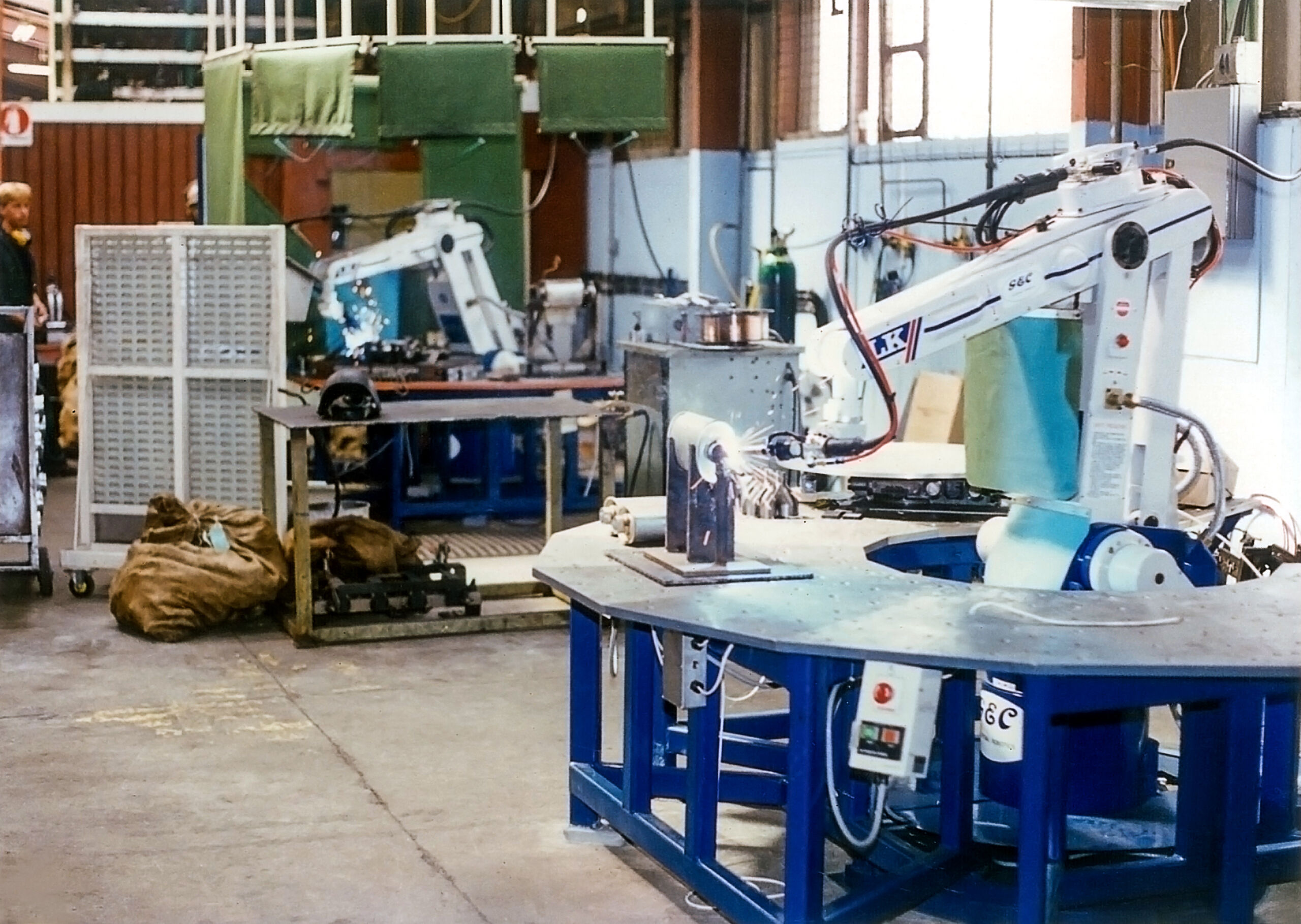
Aluminium Smelter Super Repair Welding Robot Cell
One of the latest innovations to come from Carbines Engineering is the process for repairing contact faces on the “Cell Superstructure Buzz work”. The worlds largest commercially manufactured articulated robots from Motoman were selected for this operation, after all it would have to carry out a process that no one was aware of having been done before. “Use a 200mm surface cutter to mill an aluminium face to N6 or 0.8 micron quality finish and be Mechanically Separate from the work piece”.
Why would anyone require such a system? Because the robot not only pre-mills the face, it also rebuilds it! Using a MIG welder, it then lay’s on weld to the face, before finish milling it. The smoothness of this operation does tend to hinge on how well prior welding has been done to these faces, as it is difficult to weld correctly if the base metal is badly composed. All things being equal, however, the system can accommodate angled faces etc. by having the robot sensor-search the face and change its welding and milling positions to suit Buzz work distortions along with reasonable Superstructure placement. After all it is rather difficult to accurately place 14 tonnes of superstructure in front of a robot.



